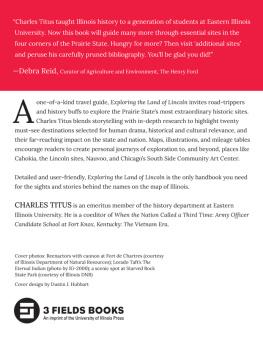2016 by the UNIVERSITY OF NEW MEXICO PRESS
All rights reserved. Published 2016
Printed in the United States of America
21 20 19 18 17 16 1 2 3 4 5 6
The Library of Congress has cataloged the printed edition as follows:
Names: Julyan, Robert, 1943 author.
Title: Hiking to history : a guide to off-road New Mexico historic sites / Robert Julyan.
Description: Albuquerque : University of New Mexico Press, [2016]
Identifiers: LCCN 2015030473 | ISBN 9780826356857 (pbk. : alk. paper) | ISBN 9780826356864 (electronic)
Subjects: LCSH: HikingNew MexicoGuidebooks. | TrailsNew MexicoGuidebooks. | Historic sitesNew MexicoGuidebooks.
Classification: LCC GV199.42.N6 J828 2016 | DDC 917.8904dc23
LC record available at http://lccn.loc.gov/2015030473
Cover photograph: Harold Walter at Wheeler Peak, New Mexico, courtesy of the Palace of the Governors Photo Archives (NMHM/DCA), 182943
Designed by Lisa C. Tremaine
ACKNOWLEDGMENTS
Bill Baxter, Galisteo Basin historian
Denise Bleakly, master geographer and longtime good friend
Baldwin G. Burr, historian of the Rio Abajo and secretary of the Historical Society of New Mexico
Eddie Collins, neighbor and hunter
Mike Coltrin, hiking guide
Jan Cummings, friend, archaeology and geology maven
Jean and David Cunningham, Smokey Bear Museum, Capitan
Scott Denning, author and librarian, history maven
Fraser Goff, University of New Mexico geologist
Elise Gomber, Ruidoso River Museum
Melissa Howard, friend, Sandia Mountains maven
Steve Irwin, airway beacons expert
Michael Kamins, KNME
Jim Koehler, author and aviation maven
Tim Livingstone, retired Forest Service ranger, Capitan
Joe Dan Lowry, Turquoise Museum in Albuquerque
Tom Lyttle and Donna Smith, archaeology volunteers, Jemez Ranger District
Frances Joan Mathien, archaeologist, turquoise expert
Homer Milford of Albuquerque, a true friend of Cerrillos Hills State Park
Needa Murphy, Taos art historian
Gretchen Obenauf, Bureau of Land Management archaeologist, Rio Puerco Field Office
David Pike, friend, author of Roadside New Mexico: A Guide to Historic Markers
Mike Prewitt, technical consultant
Greer Price, director, New Mexico Bureau of Geology
Clayton Roberts, REI, hiking and history maven
Ana Steffen, archaeologist, Jemez Ranger District
David Straub, photographer, aviation maven
Jerry Thompson, historian, author of A Civil War History of the New Mexico Volunteers and Militia, who shared his text and maps
Carla Ward, friend and relative, mayor of Tinkertown
Norman Ware, copyeditor
David Warnack, district ranger, Smokey Bear Ranger District
Darrell Weybright, assistant chief, Wildlife Management Division, New Mexico Department of Game and Fish
Jerold Widdison, friend, history and geography maven
Sarah Wood, New Mexico State Parks
All the people at the University of New Mexico Press, especially Clark Whitehorn, executive editor. Unflaggingly cheerful, encouraging, and helpful, theyve always been a pleasure to work with.
I owe special gratitude to Richard Melzer, a good friend and a great historian, who reviewed the manuscript and whose exhaustive knowledge of New Mexico history made it a much better book. He also is a skilled writer whose many books are essential reading for anyone interested in New Mexico history.
I also am especially grateful to David Ryan, whose book The Gentle Art of Wandering epitomizes finding history in the New Mexico backcountry and who supplied many photos, along with his three adventure dogs, Petey, Paddy, and Teddy, accompanied me on many of my hikes.
INTRODUCTION
Ive always felt that history is best experienced on foot, if for no other reason than that was usually how it was made. Not much history was made careening down a highway. And, for the same reason, I have a special fondness for historic sites beyond the reach of automobiles, because motor vehicles have a way of tainting or at least altering everything they touch, whether through parking lots, visitors centers, roadways, or just traffic noise.
So when I moved to New Mexico more than thirty years ago, I was elated by what I found here: a wealth of historic sites from more than thirteen thousand years of human habitation located on vast tracts of wild land with limited or no road access. I came across sites on remote mesas where Paleo-Indians once hunted mammoths, and I visited deep canyons where battles had been fought. It was the stuff of high drama and romance, with colorful characters from enormous dinosaurs to Apache warriors to Billy the Kid to World War II bomber pilots.
And best of all, for me at least, many sites of historic significance could only be visited on foot. Think of Kansas or Mississippi or New Jersey or almost any state east of the hundredth meridian. They also have a plethora of historic sites, but almost all can be reached in a vehicle.
So what? you might ask. Well, for one thing, a historic site accessible only by foot is more likely to be as it was when the historic event occurred therepristine, uncluttered, no visitors center, no parking area, no interpretive or regulation signsjust you and the place and the history, closer to the event physically and emotionally. Interpretive facilities can be useful, but for me understanding history is partly an exercise in imagination, trying to see in my minds eye what happened at the place, and that becomes easier without the overlay of interpretation.








